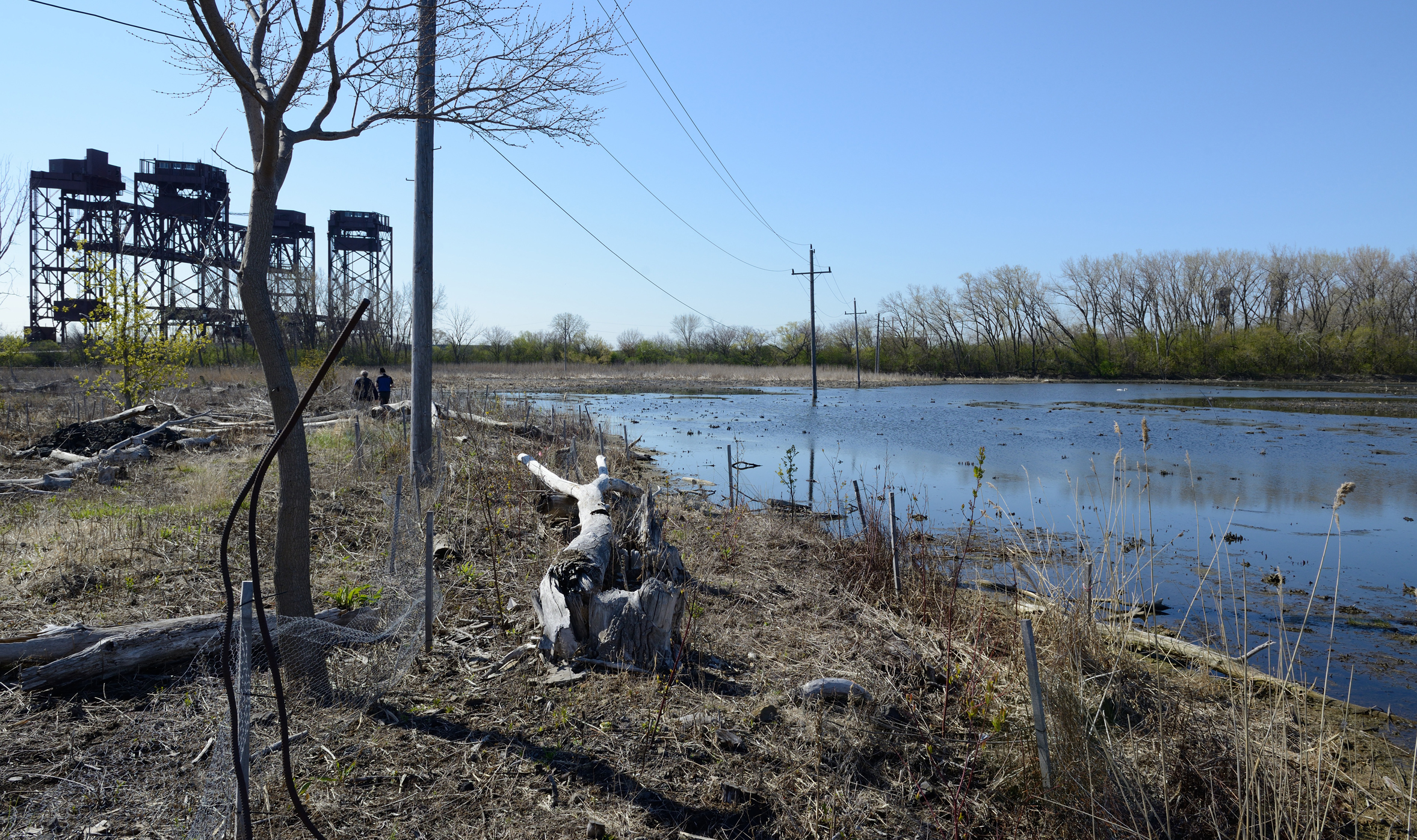the calumet region
For decades the Calumet region has loomed large within the Chicago conservation community as an area with tremendous potential for ecological restoration. On-the-ground work was stuck on the drawing board until recently but is now taking off, with the Wetlands Initiative playing a central role.
Covering much of Chicago’s Southeast Side and portions of northwest Indiana, the Calumet region was once one of the most biologically diverse wetland areas in North America. Now it’s a patchwork of remnant habitats; many of them are still important havens for biodiversity but have been degraded by decades of industrial development.
With many of the region’s factories now closed, a range of organizations have come together to work on transforming the Calumet both economically and ecologically. Since 2015, TWI has been part of collaborations in both Illinois and Indiana doing scientific assessments of potential sites for ecological restoration and developing detailed plans for those identified as priorities.
Building on this conservation action planning, TWI is now also engaged in on-the-ground projects at Indian Ridge Marsh, a priority site on Chicago’s Southeast Side owned by the Chicago Park District, and along the West Branch of the Little Calumet River in Indiana. In both these efforts, we’re partnering with Audubon Great Lakes as well as a range of local stakeholders. The goal is not just to restore native habitats but also to provide the surrounding communities with open space and recreational opportunities—amenities that have not been available to many of the area’s residents.
Volunteers help TWI plant seedlings at Indian Ridge Marsh on Chicago’s Southeast Side.
At Indian Ridge Marsh, TWI staff are participating in a volunteer bird monitoring effort led throughout the Calumet by Audubon Great Lakes to record how the number of wetland birds is changing in response to restoration efforts.
Hemi-Marsh in the Calumet
Restoring hemi-marsh is crucial to recovering the Calumet region’s biodiversity. Even the little hemi-marsh that still exists has been seriously degraded by encroaching invasive species and altered water patterns.
Hemi-marsh has a roughly 50-50 mix of emergent vegetation and open water. It’s the primary wetland type needed by nearly all the Calumet’s declining wetland birds, including the Black-crowned Night-Heron, Common Gallinule, Least Bittern, and other rare species.
An example of healthy restored hemi-marsh at TWI’s Dixon Waterfowl Refuge in north-central Illinois.
Hemi-marsh develops through the interactions between marsh-dependent creatures like muskrats and seasonally variable water levels. These interactions result in a complex mosaic of openings in the vegetation that offer ideal foraging, nesting, and resting areas for wildlife.
Re-creating the conditions needed for hemi-marsh to develop is at the heart of TWI’s restoration plans in the Calumet region.

